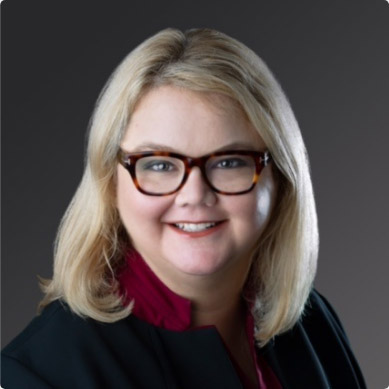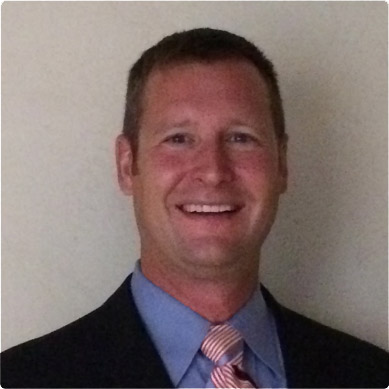Hear DMEC subject matter experts discuss hot topics from the 2024 DMEC FMLA/ADA Employer Compliance Conference including priorities shared by the DOL and EEOC. Bryon Bass, CLMS, CEO; Jess Dudley, CLMS, CPDM, education manager; and Kristin Jones, CLMS, PHR, SHRM-CP, director of education programs, talk about what resonated most as well as tips to help integrated disability and absence managers create compliant and caring environments.
Resources referenced in this episode:
- 2024 DMEC Virtual Compliance Conference
- FMLA/ADA Training for Supervisors and Managers
- Building a Return-to-Work Program Microcredential Course
- DMEC
Transcript
DMEC: Welcome to Absence Management Perspectives: A DMEC Podcast. The Disability Management Employer Coalition, or DMEC as we're known by most people, provides focused education, knowledge, and networking opportunities for absence and disability management professionals. DMEC has become a leading voice in the industry and represents more than 18,000 professionals from organizations of all sizes across the United States and Canada. This podcast series will focus on industry perspectives and provide the opportunity to delve more deeply into issues that affect DMEC members and the community as a whole. We're thrilled to have you with us and hope you'll visit us at www.dmec.org to get a full picture of what we have to offer, from webinars and publications to conferences, certifications, and much more. Let's get started and meet the people behind the processes.
, and we're talking about the:ccommodation requests. DMeC's:Heather Grimshaw: I appreciate that overview. I think it sets the stage beautifully for the conversation, and so I'm hoping we can expand the conversation and get some of the team's tops takeaways from sessions with representatives from, as Bryon noted earlier, the Equal Opportunity Commission and the Department of Labor that focused on priorities and updates, as well as the Americans with Disabilities act and the Federal Family and Medical Leave act compliance challenges Jess, would you kick us off?
Jess Dudley: Yeah, I thought Helen Applewhaite with the DOL provided some really nice takeaways during her session. She provided insight into current priorities updates they're working on compliance challenges one of my key takeaways was the emphasis on the ongoing collaboration amongst the agencies, so we know the DOL and the EEOC are collaborating. But she also indicated that there could be additional upcoming collaborations with other entities, so it's something to keep an eye on. And I also found the discussions around their marketing strategies to be interesting. Helen mentioned that they really want to really reach people where they are, and they have really focused on their social media outreach and their website features. And one example of this approach was they had a Beyoncé social media post that garnered more than 13,000 views. And this underscores the importance of leveraging all the tools in our toolbox to effectively communicate compliance information and resources to a diverse audience of workers. And I think this is something that we really all can learn from. Kristin, what do you think?
Kristin Jones: Well, I love the Beyoncé meme that she shared as well that had me laughing. But one of my favorite things from, and this was from both Jocelyn Samuels’ session from the EEOC as well as Helen's from the DOL. But they both said, “We're from the government and we're here to help. And they said it kind of tongue-in-cheek knowing that they’d get a chuckle from folks when they say that. But they really were hoping to emphasize that that really is the mission of their respective agencies and their enforcement efforts. And I just think, you know, it really showed it's so nice to hear from the agencies, have them personalized a little bit for us. Their presence at the compliance conference, I think, is just so valuable. That interaction with them, the updates and on their priorities and their initiatives, and really seeing beyond just what's in black and white print on their website or their, you know, publications that come out and really hearing from the behind the scenes and the intent behind them and the impetus for their different initiatives, I think just hold so much value because I think, as we know, with our own programs and the things that we do at our organizations, understanding the intent and the motivation behind something really helps understand it and just get a full, a more full and robust picture of it and an understanding of how to move forward with that from a cultural standpoint, from an application standpoint. So, you know, it's just always so nice to hear from the agencies at the conference and understand what they're, what they're working on. But I just, I love the, how this humanizes the agencies we work in tandem with really help center our understanding of what we do. It's not just for the sake of compliance, but it's, we're here, and they're here to better people's lives as a joint effort. And I love that that comes from those discussions with them in the conference. What about you, Bryon?
ve management survey again in:Heather Grimshaw: I'd love to hear you guys weigh in on some of the biggest opportunities for employers when it comes to compliance that were discussed or maybe identified during the conference. So, Kristin, let's start with you here first, and then we'll ask Bryon and Jess to weigh in.
tracking accommodations from:Bryon Bass: Kristin, you did such a great job starting us out, and I agree. It really depends on where you are as an employer. I think that we're all in different stages of evolution, if you will. And so as a result, we all come with different needs that are probably a higher priority than others. But, you know, I could synthesize it into probably four or five different little areas. You know me, I like to compartmentalize things and talk about them in little chunks, but I won't talk about the technology component again, because, Kristin, you did such an exceptional job talking about how we can leverage technology for compliance and efficiency overall and streamlining, and there's just so much, so much promise that's coming from the technology tools that are out there, especially in our particular space. But, you know, it really adopting that people first approach, there's an increasing recognition of the importance of a compassionate approach to compliance. So we're seeing that by adopting policies that genuinely consider the well-being of employees. And I mean genuinely, they're not just put in place because you think they're there, but these employers actually generally are considering the well-being of their employees. Employers are creating more positive work cultures that not only meet compliance requirements, but also support employee retention and satisfaction. I think employers are also looking at areas where they can build a competitive advantage through compliance, if you will. So really, employers that are going beyond that minimum compliance requirement and proactively creating supportive, inclusive workplace can differentiate themselves in the job market. I know with many Deib efforts, a lot of employers who are focused in that and inclusion really are showing that they are different to the work environment. And we also heard through some of the survey results that were shared during the conference that the younger generations that are in the workforce are really looking for employers that do genuinely demonstrate that they care. And as a matter of fact, they expect that from their employer. So employers that are not moving along in this direction are going to be left out and they're not going to be as competitive as others. I think it's also important to recognize the impact of AI and digital transformation and the digital transformation and leveraging technology for compliance and efficiency, which Kristin talked about. This digital transformation phase is really going to be pretty disruptive. I don't think we really understand how disruptive it's going to be to our particular work in our industry just yet, but I think it presents both challenges and opportunities for compliance. We're already seeing things from the EEOC around recruitment and accommodation processes and ensuring that whatever, and we heard this from the EEOC, Jocelyn specifically talked about and stated that there are areas that they're looking at to ensure that the AI tools are not introducing discriminatory practices unintentionally into what we're doing around our work. So it's important that we understand what AI is doing. And even if you're using vendors or technology that has AI incorporated into it, I think this hasn't been specifically outlined as a responsibility, but it is the responsibility of the employer to ensure that the AI that's being used in those products is being used in a way that's not discriminatory. Otherwise, you're going to be on the hook for that as an employer. So we have to figure out how do we incorporate AI in and what are we looking for. And so we're going to explore that this year in DMEC overall in a variety of different ways, and we're going to continue to have topics around AI and then finally staying informed on EEOC and DOL priorities. Yes, they send out information, they provide information on their websites, but really, you get the context of what the EEOC and the DOL is looking for by coming to our, to our conferences. And really that helps you to keep up to date with the latest priorities. And it also gives you an opportunity to ask questions that are specifically related to the work that we're doing so that you can have a better understanding of the things that they're looking for and the pitfalls that they're suggesting that employers look out for and address.
Jess Dudley: Luckily, I had several opportunities stand out because Kristin covered technology very well and Bryon talked about the well-being of the employee that I had noticed. One other thing that stood out to me was just staying updated on the ever-evolving legislative updates, and that was highlighted. There was an emphasis there to make sure you're adapting your policies accordingly as these different state leave laws come out. Several states come to mind on this topic. One for me is Oregon. And then there's the focus on effective communication and education and training initiatives. So again, they were stressed as vital components in fostering that supportive work culture and minimizing compliance risk, because ultimately, embracing these opportunities not only ensures regulatory compliance, but it also creates this workplace where employees are going to feel valued and supported. And really, that's a win win, I think, for everyone.
Heather Grimshaw: The phrase compliant and caring was heard throughout the conference and actually was one of the session titles which prompted the question, really are both possible. So I'm hoping the team will weigh in on this and was thinking we could start with Bryon and then segue to Jess and Kristin.
Bryon Bass: Yeah, thanks, Heather. You know, this is really critically important for our field, and the phrase compliant and caring really reflects a growing sentiment in the corporate world that organizations don't have to choose between strictly adhering to laws and regulations and showing empathy and consideration for their employees. Really, as I talked about at the conference, the law and compliance is the floor, not the ceiling, of what we can provide to employees to help them in the moments that matter. And the idea is that compliance can care and indeed should coexist in the workplace. This dual focus was clearly a point of discussion during the compliance conference, and I think that really does reflect a broader industry trend towards human centric business models. It poses the question of whether organizations can be both compliant with legal obligations under the FMLA and the ADA and other types of laws by also supporting and caring for employees that are facing these challenging situations. The opportunities to be both compliant and caring are many fold, and I think employers need to look at it from a framework perspective in what are you doing to cultivate a supporting culture? You can have all these great policies in the world that we think are inclusive and supportive. But if you don't have frontline leadership and the people that employees report to on a day to day basis, actually demonstrating that they also support those policies and those offerings that are in place, then the employee is not going to feel as though it's something that they can take. They might feel continued stigma. So we really have to figure out how do we do a better job of cultivating supportive culture overall. We know this enhances employee retention. I think that during the session that Unum did specifically around, is this possible? Like I said earlier, they shared results from a study indicating that the newer generations in the workplace are putting a high rating on companies who support them. And they believe it's that the companies have a responsibility to do this. This also helps overall with brand reputation. So companies that are known for caring for their employees are seen as some of the companies that people want to do business with or maybe they want to buy products from. So it's important that this culture extends beyond the walls of the organization, but out to society as a whole, because that really helps to enact change overall within our communities. And we really have to make sure that we're mitigating those legal risks. The compliant and the caring aspect, you can't not be compliant with what you've got to do at a minimum level. But again, that's the floor, not the ceiling. We have to remember that. And also we should encourage engagement. We should encourage employees to take the time off as they need to bond with a new child, to take care of a family member and provide care. Increasingly we continue to see a lot of stigma, especially with males taking time off to bond with the newborn. They may have 12 weeks of time available to them. Under the FMLA and increasing number of states they have paid time available. But when you look at the statistics, they're using much less time than they have available. And we're hearing that a lot of it has to do with stigma. And then also the idea that if they're not there, they're not being seen as contributing to the work environment and there's fear that it might be represented in their performance reviews and their ability to advance in the workplace. So we really need to cultivate these supportive cultures internally and then those supportive cultures will become a part of our society overall and we will definitely then be in a place where we're not only compliant, but we're also providing caring aspects for our employees. And again, that is an expectation of the newer generation coming into the workforce.
Jess Dudley: Yeah, I agree with you there, Bryon. I think we had several sessions that looked at the intricate landscape. As you mentioned, in today's workforce, it's become really evident that achieving that compliance and compassion is not only possible, but it's really imperative. I thought that we had. Well, we had several sessions. One of them was highlighting the diverse generational makeup of employees and kind of all the different needs they have. The industry is really striving to engage every individual. It kind of goes back to that, meeting them where they are and then leveraging all the available resources. There's also been that focus, as you mentioned, on kind of the holistic well-being that encompasses the mental, the physical, the financial health of the employee and the company. And we're hearing about the emergence of some really cool benefits. And one of them that stood out to me was societal contribution days where not only can you go and do, but you're encouraged and it's often and a paid day, and you're given this guilt free day away to go complete volunteer work and to give back to your community. I think that's really rewarding for both the community, the employers and the employees. And additionally, there's initiatives promoting regular communication, education and training that really underscores the commitment to nurturing a supportive workplace culture. So we have manager training aimed at fostering role models, mentorships. Further, this shows that the industry is dedicated to not only fostering compliance, but it again shows that genuine care about their employees welfare. Now, Kristin, do you have some thoughts?
Kristin Jones: I do. I completely agree with everything that Jess and Bryon have just said, and I just think 100%, yes, compliance and caring have to go hand in hand. I think we are well past the days when an employee stayed with an employer because they've accrued four weeks of vacation and have a good parking spot or seniority, like Bryon said. I mean, frankly, employees are simply not tolerating employers that aren't caring. They are flat out opting out of employers that don't have a supportive culture. So it's critical that we prioritize this. And I think caring dovetails very nicely with compliance. They're not two separate things, they really do. It's important to consider how compliance impacts compassion and vice versa. I think Bryon and Jess both gave some great examples there. I think also one of the sessions that stood out to me was we had one on accommodation monitoring, and that's an area that we don't always have a lot of detailed focus on. I think a lot of times we go through the accommodation process and that can be tricky. So we understandably put a lot of our focus, a lot of our education there, and a lot of our conversation revolves around those, you know, the interactive process, the identifying accommodations and implementing. And then we kind of tend to put an accommodation in place. And then we think, okay, like, we're probably not like as likely to get sued now that we've put an accommodation in place. So let's shift our focus to the next thing coming at us. And I think the accommodation monitoring really shows how compliance and caring dovetail because I think that it's a really important additional step in that process and it's not one to be ignored. It really is making sure when we've put an accommodation in place that it's the right accommodation for our employees. It's meeting their needs. It is solving for what initially brought them to us in the first place. And also, sometimes we lose track of sometimes accommodations need maintenance. If we put, you know, get someone some adaptive technology, you know, that might need a software update, that might need a new version down the road, there's all kinds of accommodations that, that would be a consideration for. But just period, if there are accommodations out there, we should be revisiting those. We should make sure they're continuing to meet the need. We should make sure the accommodation need hasn't changed. You know, the person's medical need for that hasn't evolved in, for better or worse, to make that accommodation lesser or overly or not effective anymore. So I just thought that was a really good kind of look at that integration of compliance and caring. But just overall, in all aspects of what we do and in our programs and organizations, I think we are setting ourselves up for failure if we are not looking at compliance and a caring culture hand in hand.
Heather Grimshaw: My last question for you all is about the Pregnant Workers Fairness Act presentation with Marjory Robertson from Sun Life and Carol Miaskoff, legal counsel for the EEOC. This was a timely presentation on several levels. And Carol shared some practical guidance about the need to create new forms instead of using ADA forms. And noted, and I'm using air quotes here because this is a direct quote, a lot of people, when they come in and say they're pregnant, they're just put on leave and that's what this is intended to prevent. So what were some of your takeaways from this session? Jess, we'll start this off with you and then go to Kristin and wrap up with Bryon.
Jess Dudley: So I had two that seem to be fairly simple concepts as takeaways. One was use some common sense, and the other was talk to your employees. Carol talked about using common sense around the typical request for pregnancy accommodation. I think she had them labeled as her big four is that carry water and drink as needed, additional bathroom breaks, sit or stand in a job that typically requires otherwise, and breaks as needed to eat or drink. She said these should be quick evaluations and that supporting documentation isn't always going to be required. And really, delays with these could be seen as violations. And she cautioned us to be sure that we know what our state and local leave laws are, as they could include additional requirements. They might have something in there about lifting type requirements or call out a specific symptom like morning sickness. She also emphasized that the interactive process is really key. Have that dialogue. She said the law says that the employers cannot force an accommodation on someone or force someone out on leave, and that really, that determination needs to be reached through the interactive process. So just be prepared to have that discussion with your employees. Kristin, what are your thoughts? Or what were your takeaways?
Kristin Jones: I just really noted, I think Carol did a great job, and it was so helpful to hear from the EEOC on this because she really, it seemed like, focused some of her conversation around underscoring that this is a different law, this is an additional law added into our suite of laws that we are considering in these programs, and as we look to accommodate employees. And she really took some pains to kind of differentiate the PWFA from, like, the ADA. And I think a lot of people thus far have attempted to say that the PWFA is really just a beefed up kind of title seven of the ADA. And in some ways that might be true. But I think hearing from Carol really underscored that this is a unique law that's bridging a gap that the ADA left when it didn't address the more everyday needs. And I'm using every day in quotes, are like little air quotes of our pregnant workers. I say every day in air quotes because that makes it sound like everything is common or similar. And we all know no two pregnancies are the same, but just those needs that don't rise to the level of a disability as defined under the ADA. And I think this law is really kind of the culmination of compliance and caring coming together, where we, you know, there was a need identified, kind of a segment of our workforce left behind in a law that really needed some accommodation and some practical common sense, like what Jess said, you know, that's kind of underscores this entire law and the application of it. And so they brought it in here with the PWFA and really gave us some, some good foundational information and requirements to follow with this and to meet. You know, we have so many employees in most of our workplaces that this is one of the most common issues, or not issues, but experiences or events that we encounter in the workplace. And so it makes sense that we have this law. And I think hearing from Carol really helped understand some of the basis for that and the application of it. So what about you, Bryon?
Bryon Bass: Well, you guys did an exceptional job, again, of explaining it. I just would reiterate again, you need to look at this law separately from the ADA. Don't try to force it into the ADA. Yes, there are components of the ADA that were incorporated into the PWFA, like the interactive process, the need to go through that. But I would also say that my takeaway is very simple, and it's similar to what Jess was talking about. And that is, you know, employers in all cases should be finding ways to accommodate individuals rather than a blanket approach of putting them on leave. The EEOC has talked about this for years as it relates to ADA overall, and they frowned upon those actions overall, which is why one of the foundations of a sound integrated disability and absence management program is one that focuses on stay at work and return to work opportunities. The PWFA makes it very, very, very clear that employers must demonstrate through the interactive discussion or process that they've made every effort to accommodate pregnancy related conditions, and that the majority of these conditions can be accommodated fairly easily within the work environment. So it's going to be very, very difficult to establish an undue hardship in these particular situations, especially considering that they're expected to be temporary in duration in nature. One other thing that I was remiss about saying earlier on around the EEOC and the DOL, and it came to my mind, as we're talking about the pregnant Workers Fairness act, is that Helen from the DOL talked about the Pump act, and there is an intersection with the Pump act for lactating mothers in the work environment so that they have the ability to pump in a location that isn't a break room, that isn't a break room, or isn't a janitor's closet or any of the things that we may have seen happen throughout the years. But they have that right to take those breaks and to do those types of things. And so there's an intersection here between the PWFA and pump and the FMLA and the ADA, and all of these things intersect. And never has that been more clear that they are different. They are distinct. You have to evaluate them separately, but you also need to understand where they intersect, where they might overlap, where they might run concurrent, etcetera. So that's something that the DOL and the EEOC are working on in terms of their outreach efforts, is to really put more emphasis around how all of these different laws and how these rights intersect with each other and work together.
ence will be repeated for the:Bryon Bass, Jess Dudley, Kristin Jones: Well, thank you.





